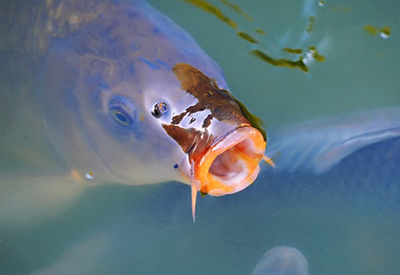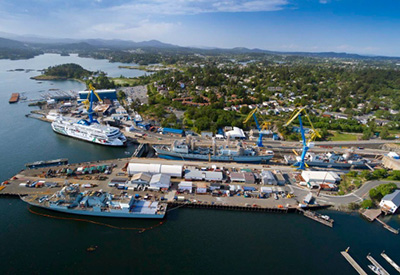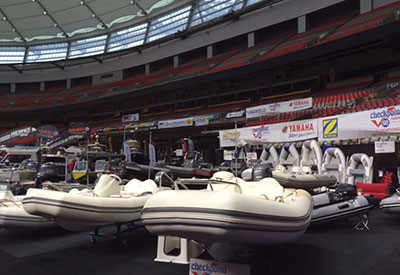How Infecting Carp With Herpes Can Help Save Dying River Systems

May 9, 2016
When carp were first introduced into Australia in the mid-19th century, acclimatizing settlers hoped the freshwater fish would bring a taste of home to their food and recreational activity down under. Today, these pests are running riot across the country’s waterways, seriously compromising the health of its rivers and native species. The Australian government is now moving to cut populations through the controlled release of carp-specific herpes virus, which it says is capable of killing individual fish off within 24 hours.
The Murray-Darling Basin stretches through Australia’s eastern states, covering 14 percent of its total land area and his home to 57 different species of freshwater fish. But with the ability to endure a range of aquatic habitats, carp has bred wildly in the past 40 years. So much so, that it now makes up as much as 90 percent of fish biomass in certain rivers within the Murray-Darling Basin.
Photo: Once the carp are infected with CyHV-3, the virus multiplies over the next seven days or so.
As it it poses an increasing threat to the well-being of native species in the region, Australia’s Commonwealth Scientific and Industrial Research Organisation (CSIRO) has been researching a biocontrol agent to try and reduce numbers.
“Because of the way carp feed, where they feed on either plant life or small invertebrates in the mud at the bottom of the river, they suck in an amount of material from the river bed and spit it out, sifting out the food that they want,” Dr Ken McColl, CSIRO Head Researcher at the Australian Animal Health Laboratories Carp Control Team, explains to Gizmag.
“So this process means that the water becomes very, very muddy and unclear, and that then stops plant life from growing because they can’t get enough light,” continues McColl. “It also upsets some of the invertebrate life, it upsets the breeding of some of the native fish species and because all of these things happen, it actually has impacts further up the line. So you stop getting a lot of bird life coming to the waters like ducks that feed on the plants, for example.”
It is with a healthy hint of irony that the panacea to Australia’s carp problem may come via a virus that has caused monumental damage in other parts of the world. While carp is an unwanted pest in Australia, it is actually an important source of protein in much of Asia, Eastern Europe and parts of the Middle East. So when the Cyprinid herpesvirus 3 (CyHV-3) appeared in Israel in 1998 and swept across carp farms killing off large portions of livestock, it spelled bad news for many. But in countries where carp pose a problem, there was perhaps a silver lining.
“It’s what I sort of call the yin and the yang of this virus really,” says McColl. “It has good and bad effects, good and bad sides. For Australia it is viewed as a potential white knight to help us clean up our river systems.”
McColl and his team have been investigating CyHV-3 as a potential biocontrol agent since 2008. This has meant assessing the effect the virus might have on other species that live in the same water as the carp. He tells us they have conducted experiments on 13 different species that live in these waters and have found no evidence that the virus causes any disease, or that it even multiplies in those fish. His team has three remaining species to assess before the virus is released.
“We feel pretty confident that it is very safe,” says McColl.
Once carp are infected with CyHV-3, the virus multiplies over the next seven days or so. Then over a period of about 24 hours, it damages the kidneys, skin and gills and hinders the fish’s ability to breathe and prevent water entering its body, causing it to die thereafter.
With the economic impact of carp in Australia estimated at AU$500 million (US$380 million) per year, the Australian Government has just launched a AU$15 million (US$11.5) National Carp Control Plan to tackle the problem. This will cover the implementation of the carp herpes virus, which it estimates will kill 95 percent of carp in the river system according to the ABC, along other complementary measures as well.
“We are looking at a window of somewhere between two and four years where the virus will really knock the carp down, before they start recovering again,” says McColl. “As they start recovering we are going to want to use a variety of local, regional methods for control, like carp cages, netting to stop carp getting access to breeding grounds and physically hauling carp out of shallow lakes and ponds with nets, all the sorts of things that have been used in the past.”
This is the short-term outlook, but the long term view is a little more tricky. McColl expects that over time carp will develop some form of immunity to CyHV-3. But just as nature provided the answers in the past, he anticipates it will do the same in the future.
“We could work in the lab on producing a new virus but that’s probably going to be looked at as a genetically modified virus and so it’s probably not going to be acceptable,” he says. “But we can look for new generations of the same virus from overseas where the virus occurs naturally in other countries, and we’ll get the new generations from over there and bring them back to Australia, and they should be more potent for us here than the one we have at the moment.”
Because CyHV-3 can only grow in temperatures ranging from about 16 to 28 degrees Celsius (61 to 82.4° F), McColl says using the virus to control carp in other locations where their populations are out of control, such as the US, could be complicated. But he says neighboring New Zealand, though its carp problem is not of the same magnitude, has been following his team’s work closely and might one day follow Australia’s lead.
“They’d be happy to see it being used here and know that they could pull it out of their back pocket if they need to in the future,” he says.
Story and image courtesy www.gizmag.com
Source: CSIRO





























